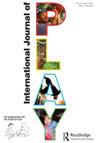The association between school-aged children’s self-reported levels of playfulness and quality of life: a pilot investigation
IF 1.2
Q3 EDUCATION & EDUCATIONAL RESEARCH
引用次数: 0
Abstract
ABSTRACT Playfulness and quality of life (QoL) appear to be related constructs; however, no studies have explored the potential association between them to date. Playfulness and QoL are important practice-related concepts for education and therapy professionals who work with children and their families. This study examined the potential links between children's self-reported playfulness and QoL. Thirty-one typically developing children aged 8–12 years (average age 10 years and 9 months, standard deviation = 1.12; 61.29% female) completed the Children's Perceptions of Their Play and the KIDSCREEN-52 instruments. It is noted that the onset of the COVID-19 pandemic during 2020 made participant recruitment and the execution of the study challenging. Data were analyzed using Spearman rho correlations and linear regression with bootstrapping. Data analysis results revealed statistically significant associations and predictive relationships between QoL-related physical wellbeing to active play and free time; QoL-related psychological wellbeing to the child's overall playfulness; the child's reported levels of QoL-related autonomy and their free time; and the child's QoL-related school environment to planned activities (p < .05 & p < .01). The study findings provide preliminary evidence that significant correlation and predictive relationships exist between aspects of children's self-reported playfulness and quality of life.学龄儿童自我报告的玩耍水平与生活质量之间的关系:一项试点调查
玩耍和生活质量(QoL)似乎是相关的构念;然而,到目前为止,还没有研究探索它们之间的潜在联系。对于从事儿童及其家庭工作的教育和治疗专业人员来说,玩乐和生活质量是与实践相关的重要概念。这项研究调查了儿童自我报告的玩耍和生活质量之间的潜在联系。8-12岁典型发育儿童31名(平均年龄10岁9个月,标准差= 1.12;61.29%(女性)完成了儿童对游戏的感知和KIDSCREEN-52量表。值得注意的是,2020年期间COVID-19大流行的爆发使参与者招募和研究的执行具有挑战性。数据分析采用Spearman rho相关和带自举的线性回归。数据分析结果显示,与生活质量相关的身体健康与积极游戏和空闲时间之间存在统计学显著关联和预测关系;与生活质量相关的心理健康对儿童整体游戏性的影响;儿童报告的与生活质量相关的自主性水平和他们的空闲时间;与儿童生活质量相关的学校环境对计划活动的影响(p < 0.05和p < 0.01)。研究结果提供了初步证据,表明儿童自我报告的玩耍性与生活质量之间存在显著的相关性和预测性关系。
本文章由计算机程序翻译,如有差异,请以英文原文为准。
求助全文
约1分钟内获得全文
求助全文
来源期刊

International Journal of Play
Social Sciences-Cultural Studies
CiteScore
1.90
自引率
20.00%
发文量
60
期刊介绍:
The International Journal of Play is an inter-disciplinary publication focusing on all facets of play. It aims to provide an international forum for mono- and multi-disciplinary papers and scholarly debate on all aspects of play theory, policy and practice from across the globe and across the lifespan, and in all kinds of cultural settings, institutions and communities. The journal will be of interest to anthropologists, educationalists, folklorists, historians, linguists, philosophers, playworkers, psychologists, sociologists, therapists and zoologists.
 求助内容:
求助内容: 应助结果提醒方式:
应助结果提醒方式:


